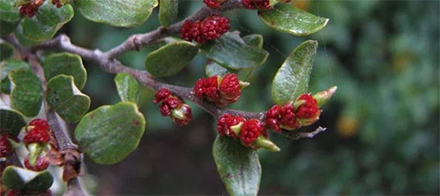
Monitoring by the New Zealand Department of Conservation (DOC) has confirmed the predicted mega mast or heavy seeding in New Zealand’s forests this autumn. Results from extensive seed sampling across the country in February and March point to the biggest beech mast for more than 40 years with exceptionally heavy seed loads in South Island forests. Source: Timberbiz
Rimu forests and tussock grasslands in the South Island are also seeding heavily. Forest seeding provides a bonanza of food for native species but also fuels rodent and stoat plagues that will pose a serious threat to native birds and other wildlife as predator populations build up next spring and summer.
Conservation Minister Eugenie Sage said that new funding of NZ$81.2 million in Budget 2018 over four years had enabled DOC to scale up its predator control program to respond to the threat posed by the mega mast.
“DOC is planning its largest-ever predator control program for 2019/2020, at a cost of NZ$38 million, to suppress rats, stoats and possums over about one million hectares or 12% of conservation land.
“This is a step up from the previous largest program of 840,000 ha in 2016 and 600,000 ha in 2014 and 2017 when there were significant but smaller mast events.
“Responding to the increased threat from introduced predators during such a big mast year is critical if we are to retain our unique native species that set New Zealand apart from the rest of the world.”
DOC’s seed sampling program involved snipping branches by helicopter from more than 8000 beech and rimu trees at nearly 200 sites across the North and South Islands and counting more than three million seed pods from 43,000 samples. More than 1000 tussock plants were also monitored at 63 sites.
The estimate of seed-fall this autumn informs predator control planning. Priority sites for predator control include Kahurangi, Abel Tasman, Arthur’s Pass, Westland, Mt Aspiring and Fiordland national parks, the Catlins and Whirinaki.
The program includes more than 66,000 ha of trapping with the remainder (more than 900,000 ha) aerial 1080 operations Aerially applied 1080 is the only tool currently available that can effectively knock down rodents over large areas before they reach plague levels after a beech mast.







